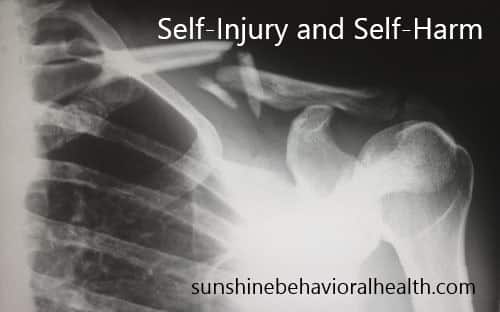
What Is Self-Harm or Self-Injury?
Self-injury, also sometimes called self-harm, is when people intentionally hurt themselves. It is usually considered a behavior, a sign of emotional distress, and a coping mechanism, not an addiction (though it can be a consequence of substance abuse behaviors such as binge drinking alcohol) or a mental health issue (extreme, cumulative grief) in itself. March 1 was International Self-Injury Awareness Day (SIAD), as it has been every year since 2002, but the topic is important enough to discuss all year long. Self-harm is usually regarded as different from a suicide attempt (although it could lead to accidental death). The goal is not to die but rather to cope with some internal tension or dissociation. Incredibly, it seems to help with this, though it is unhealthy. The Centers for Disease Control and Prevention doesn’t seem to see a distinction, lumping suicide and other types of self-injury together under the term self-directed violence. According to the Mayo Clinic, most self-injuries are performed in secret and target the torso, arms, or legs—areas that can be concealed. People practice various types of self-harm, including:- Using a sharp object (knife, razor blade, a piece of broken glass) to pierce the skin or make cuts or scars in the skin, sometimes in the form of words or symbols.
- Banging the head against a wall, door, desk, or other hard objects.
- Biting, scratching, or hitting themselves.
- Causing burns with matches, cigarettes, curling irons, or other hot objects.
- Embedding objects under the skin or into muscles.
- Overspending.
- Isolating themselves.
- Having more casual sex than usual.
- Putting everyone else’s needs before their own.
- Eating too much or too little.
- Allowing toxic people into their lives.
- Putting themselves in risky situations.
- Exposing themselves to sad or depressing media to feel worse.
- Avoiding going to the doctor.
- Sabotaging important relationships.
- Exposing themselves to allergens.
- Dressing inappropriately for the weather to punish themselves.
- Exercising compulsively to cause pain or injury.
A Message From Our CEO
Medical disclaimer:
Sunshine Behavioral Health strives to help people who are facing substance abuse, addiction, mental health disorders, or a combination of these conditions. It does this by providing compassionate care and evidence-based content that addresses health, treatment, and recovery.
Licensed medical professionals review material we publish on our site. The material is not a substitute for qualified medical diagnoses, treatment, or advice. It should not be used to replace the suggestions of your personal physician or other health care professionals.





